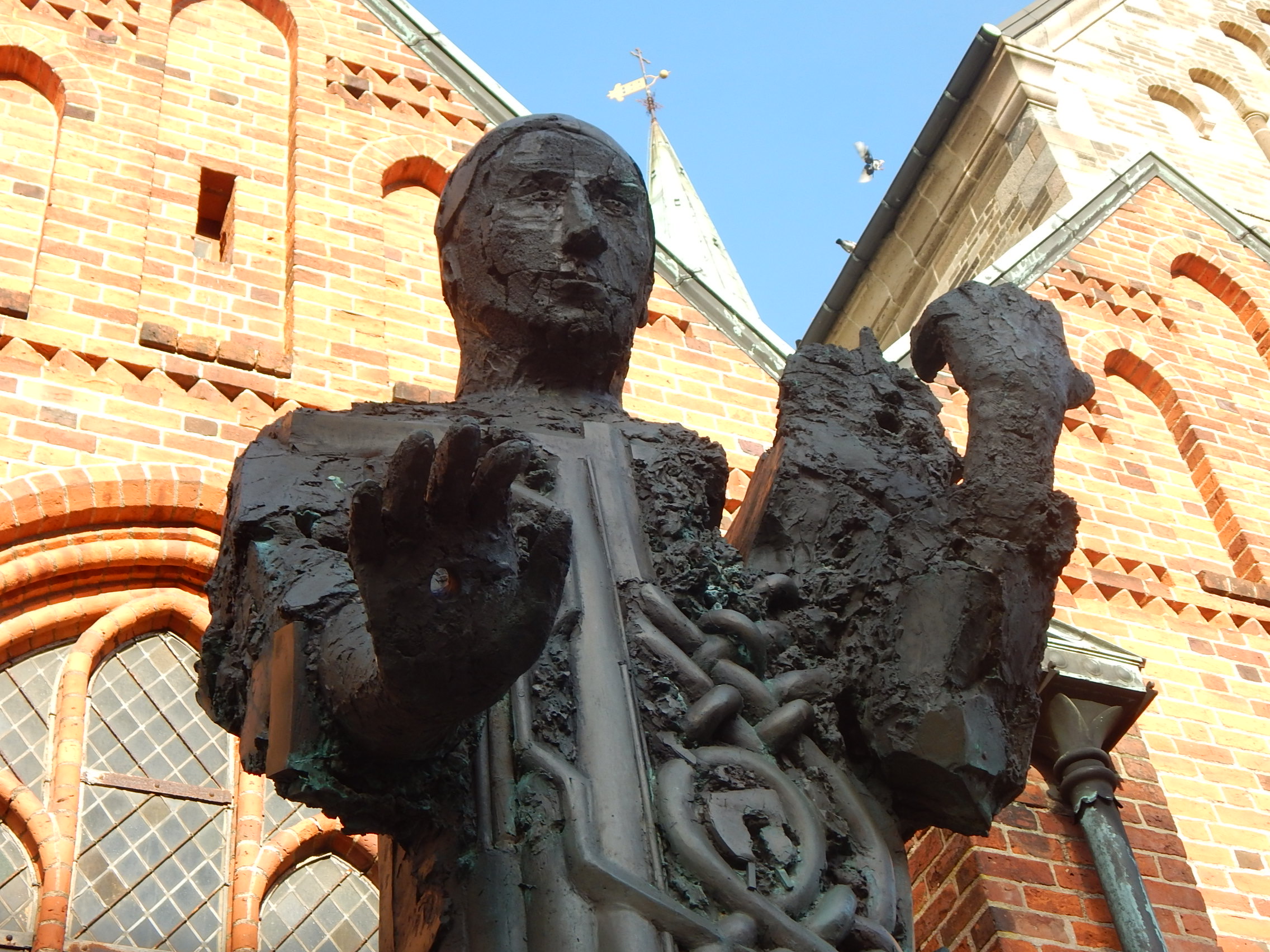The Vikings’ indigenization of the outside world is not limited to material culture but extends to ideas as well. Unfortunately, the Vikings did not leave much in the way of intangible culture so much of what we know of them comes from their non-Viking contemporaries. Furthermore, these contemporaries usually presented negative views of the Vikings. They have variously been described by people from both Catholic Europe and the Islamic world as dirty, uncouth, violent, without religion, and more. Yet when we try to look past the negative characterizations and stereotypes crafted about the Vikings, we see that there exists a level of cultural exchange between these groups that goes beyond how Vikings are depicted in outside literature.1

The Life of Ansgar. Württembergische Landesbibliothek, HB XIV 7, f. 3v-4r.
(source: Württembergische Landesbibliothek)
The Vita Anskarii, or “Life of Anskar,” was not written by Anskar himself but rather by his successor as archbishop in the Prince-Archbishopric of Bremen, located in modern Germany, named Rimbert. It is a typical hagiography, written in the ninth century CE to glorify and commemorate the life of Anskar and the efforts he undertook to spread Christianity in Scandinavia, overcoming many difficulties on the way. It is far from an objective source, being produced with the intention not of describing Viking culture or religion but of the superiority of Christianity over paganism and Anskar’s noble efforts to prove that. Still, it is a detailed text that reveals much about Viking society.
Regarding the relationship between Christianity and paganism and the gradual dominance of the former within Scandinavia, Haki Antonsson has canvassed much of the literature regarding the Christianization of Scandinavia and has argued that the role of missionaries, while previously overstated, is now more often than not undermined in the study of Scandinavia’s Christianization.2 Interestingly, however, he notes that scholarship has largely shifted to studying Christian archaeological finds as reflective of the exchange of material culture between Scandinavia and Catholic Europe. One example he provides is how Viking graves of people presumed to be Christian were given characteristically pagan burials, reflecting how Christian and pagan traditions were often syncretized in medieval Scandinavia. I seek to build off of Antonsson’s conclusion and use Anskar to provide another angle to this — specifically, to show an example of how intangible cultural and religious exchange occurred between Scandinavia and Catholic Europe without necessarily directly leading to Christianization.
The Vita Anskarii is incredibly rich in material to study. However, I seek to hone in on a particular quote where Rimbert describes the reaction of the Viking community to a curse. In the narrative, a pagan man who takes a Bible into his house is afflicted with a curse, causing his whole family to die except for himself and his one son. Rimbert then describes what happened when the man went to a soothsayer for advice:
After performing all the customary ceremonies, the soothsayer said that all their gods were well disposed towards him, but that the God of the Christians was much incensed against him. “Christ,” he said, “has ruined you. It is because there is something hidden in your house which had been consecrated to Him that all the evils that you have suffered have come upon you; nor can you be freed from them as long as this remains in your house.”
In the end, the man’s affliction only ends once he converts to Christianity. It is interesting, however, how the “God of the Christians” is implied to be one of many as the soothsayer said that all the gods were pleased with him except for Christ. Considering that this text was written by a Christian clergyman, we cannot take this as definitive evidence of a belief among the Vikings that the Christian god was real and was one of many, presumably alongside other Norse gods like Thor. That said, it does seem unusual that a Christian writer would describe the Christian god as one of many here. If we understand this passage as suggestive of a belief among certain Vikings in the power and authority of the Christian god as a divine being but not necessarily the sole one, then it would certainly fit in line with what we already know from Antonsson and other scholars about the often-blurry lines between Christianity and paganism in Viking religious practice and material culture. Perhaps, then, this could reflect an ideological syncretism and indigenization of Christianity as a stepping stone to the full Christianization that would occur centuries later.
1 Rimbert, Anskar, the Apostle of the North. 801–865, trans. Charles H. Robinson, (London: Society for the Propagation of the Gospel in Foreign Parts, 1921).
2 Haki Antonsson, “The Conversion and Christianization of Scandinavia: A Critical Review of Recent Scholarly Writings,” in Conversion and Identity in the Viking Age, ed. Ildar Garipzanov (Turnhout: Brepols Publishers, 2014), 49–73.
« Previous | Home | Next »
